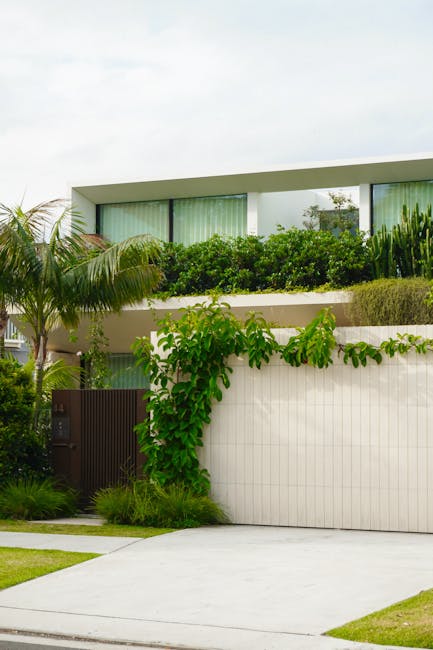Building Outdoor Living Spaces with Sustainability and Eco-Friendliness in Mind
Introduction
Outdoor living spaces have become increasingly popular, offering a seamless transition between indoor comfort and the beauty of nature. However, creating these spaces often comes with an environmental cost. This article explores how to design and build outdoor living spaces with sustainability and eco-friendliness at the forefront, minimizing your impact while maximizing enjoyment.
Designing for Sustainability: Key Considerations
Planning and Design
Before breaking ground, meticulous planning is crucial. Consider these factors:
- Site Analysis: Understand the existing ecosystem, including sunlight patterns, drainage, and native vegetation. Work with the environment, not against it.
- Reduce Footprint: Minimize the size of paved areas and choose compact designs to preserve green space.
- Permeable Paving: Opt for permeable pavers, gravel, or decomposed granite to allow rainwater to soak into the ground, reducing runoff and replenishing groundwater.
- Energy Efficiency: Design for natural ventilation and shade to reduce the need for artificial cooling and lighting.
Material Selection
The materials you choose have a significant impact on sustainability. Prioritize:
- Reclaimed and Recycled Materials: Use reclaimed wood, recycled plastic lumber, or salvaged stone for decking, furniture, and hardscaping.
- Locally Sourced Materials: Reduce transportation emissions by sourcing materials from local suppliers.
- Sustainable Wood: If using new wood, choose Forest Stewardship Council (FSC)-certified wood, ensuring responsible forestry practices.
- Low-VOC Finishes: Select paints, stains, and sealants with low or zero volatile organic compounds (VOCs) to minimize air pollution.
Water Conservation
Outdoor spaces can be significant water consumers. Implement these strategies to conserve water:
- Xeriscaping: Incorporate drought-tolerant plants that require minimal watering.
- Rainwater Harvesting: Install a rainwater harvesting system to collect rainwater for irrigation.
- Efficient Irrigation: Use drip irrigation or soaker hoses to deliver water directly to plant roots, minimizing water waste.
- Smart Irrigation Controllers: Employ smart controllers that adjust watering schedules based on weather conditions and plant needs.
Creating Habitat for Wildlife
Turn your outdoor space into a haven for local wildlife by:
- Planting Native Species: Native plants provide food and shelter for birds, butterflies, and other beneficial insects.
- Providing Water Sources: Include a birdbath or small pond to provide water for wildlife.
- Creating Shelter: Leave brush piles or install birdhouses and bat houses to offer shelter.
- Avoiding Pesticides: Use natural pest control methods to protect pollinators and other beneficial organisms.
Building Your Eco-Friendly Oasis: Practical Steps
Decking and Patios
- Choose sustainably sourced materials like reclaimed wood or composite decking made from recycled plastics.
- Use permeable pavers for patios to allow water infiltration.
- Elevate decks slightly to improve air circulation and reduce moisture buildup.
Outdoor Furniture
- Opt for furniture made from recycled materials, such as recycled plastic lumber or reclaimed wood.
- Choose durable materials that will withstand the elements, reducing the need for frequent replacements.
- Look for furniture cushions filled with recycled materials.
Lighting
- Use solar-powered lighting for pathways and landscape features.
- Install LED lights, which are energy-efficient and long-lasting.
- Use motion sensors to automatically turn lights on and off, conserving energy.
Gardening and Landscaping
- Start a compost bin to recycle yard waste and food scraps into nutrient-rich soil.
- Use organic gardening methods, avoiding synthetic fertilizers and pesticides.
- Plant a vegetable garden to grow your own food sustainably.
Conclusion
Building outdoor living spaces with sustainability in mind is not only environmentally responsible but also creates a more enjoyable and enriching experience. By prioritizing eco-friendly materials, water conservation, and habitat creation, you can transform your backyard into a beautiful and sustainable oasis. Embrace these practices to minimize your environmental impact and create a space that you can be proud of for years to come.














Post Comment